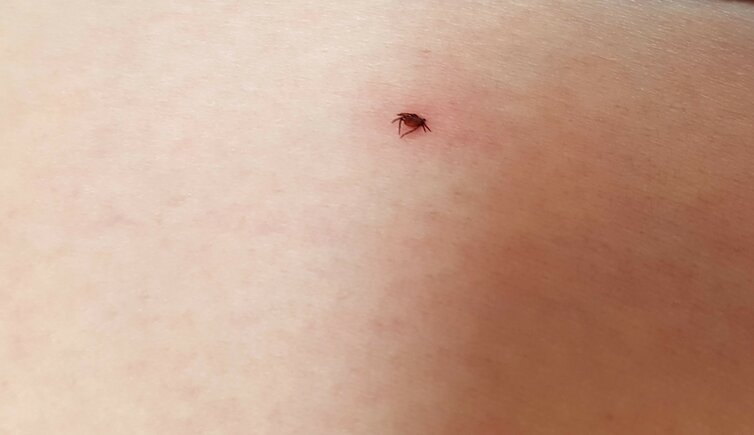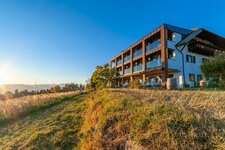In South Tyrol, ticks are often unpleasant souvenirs from an excursion: Here, the so-called sheep tick is particularly common
General information
Ticks are small and extremely resistant arachnids that live mainly on bushes up to 1.50 metres in height. From there, they cling to an animal's fur or a person's clothing with their front legs with barbs. The tick then looks for a suitable place to suck blood. Suitable hosts are already perceived from a distance of 100 metres.
Humid summers and mild winters encourage the tick population, which is most active in spring (May-June) and autumn (September-October). The idea that ticks lurk on trees and then drop on people, on the other hand, is wrong.
Occurence
Ticks prefer damp, warm, shady forests up to 900 m a.s.l. In South Tyrol, five species of sheep ticks and two species of soft ticks occur, the best known is the so-called wood tick. They are particularly widespread in the Oltradige area (e.g. in the Monticolo Forest), in the south of South Tyrol (e.g. on Mt. Favogna), in the Adige Valley (also around Bolzano), and occasionally at higher altitudes, such as the Val Pusteria valley to Campo Tures, the Valle Isarco valley to Vipiteno or the Val d'Ultimo.
Diseases
The tick itself is not dangerous, but the diseases it can transmit can be.
-
Lyme disease:
The disease was first diagnosed in South Tyrol in the 1980s. The infectious disease manifests itself after 2-4 weeks with a circular red spot that does not hurt. With treatment with antibiotics, Lyme borreliosis heals within a month. If left untreated, it can lead to inflammation of the joints, cardiac arrhythmia or chronic inflammation of the brain and spinal cord. -
Early summer meningoencephalitis (ESME):
Tick-borne encephalitis is the most common acute viral infection caused by ticks in Central Europe. Symptoms are atypical fever (up to 39 degrees C), which occurs 1-2 weeks after the bite and can last up to a week. In 30% of cases, a second episode occurs after another week with fever up to 40 degrees C, along with stiff neck, headache and inflammation of the brain and spinal cord. If complications occur, paralysis and epileptic seizures can result.
Prevention
From experience, sprays and creams against ticks are not very effective. Closed clothing and high shoes are important, as well as light-coloured clothing: On them, a small dark animal can be recognised earlier. After a hike, it is important to check the entire body of animals and humans thoroughly for ticks, up to the hairline. As already mentioned above, they sometimes crawl around for hours looking for the suitable body site.
You should shake out clothes outdoors and/or wash them at 60 degrees C immediately. Ticks usually do not survive a treatment in the dryer.
What to do in case of a tick bite?
Ticks particularly like to bite under the arms, in the knee pits, at the back of the neck or behind the ears. The bite itself is not noticed: The tick protrudes from the skin like a small foreign body and is often mistaken for a wart or a birthmark. However, it is the body of the tick, while the suction apparatus is under the skin. Therefore, the correct and complete removal of a tick is extremely important. If the head remains stuck in the skin, complications can arise, therefore the tick should not be squashed or heated.
The best way to remove it is with tweezers, which are applied directly to the skin: The entire tick is then removed with a lever movement. The doctor should be consulted if the head could not be removed (inflammation usually develops), the wound becomes infected, or fever, neurological complaints or joint or muscle pain occur - even some time afterwards. It is recommended to check the tetanus protection as well!
Vaccination
The ESME/TBE vaccination consists of three partial vaccinations and is recommended if you often stay or live in tick-infested areas. Tick vaccination is also recommended for occupationally exposed persons such as hunters, foresters or forest workers.

























